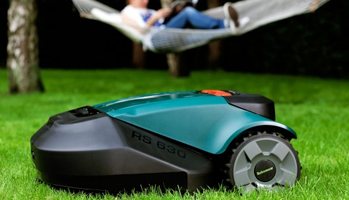With spring on its way, now is the time to consider if you need to purchase a new landmower or ride-on tractor. So here is some guidance to get you started:
Getting Started
Whether you’re in the market for a petrol or electric lawnmower, a compact ride-on tractor, or a more powerful machine, WG Gardencare offers over 25 years of expertise providing advice and help on buying and owning these tools.
For most lawns, a petrol or electric push mower should suffice. However, for larger or sloping lawns, a self-propelled petrol model is ideal. If your lawn spans half an acre or more, a lawn tractor might be your best bet.
How to choose a lawnmower or ride on tractor
1. Think about your lawn mower or tractor’s purpose. Many mowers offer options to mulch, bag, or side-discharge grass clippings. Your choice depends on your composting capability for the waste.
2. Evaluate the features and controls. Ride-on tractors typically have handy pedals or levers for speed control. Self-propelled mowers may let you control speed by pushing the handlebar or adjusting ground speed without lifting your hands.
3. For hilly properties, avoid zero-turn or rear-steering tractors, as their tight-turn capabilities make steep slopes tricky. Consider models with front steerable wheels instead.
If you’re planning to purchase a new lawn mower or ride-on tractor for spring and need guidance, contact Graham on 01403 283814. We’re happy to help you find the perfect lawn mower or sit-on tractor. Plus, our servicing and free delivery make your decision even easier.
 Your robot lawnmower can cope with any shaped garden including slopes and garden furniture such as tables, chairs and even trampolines. The environmental benefit is that all robot mowers mulch the grass they cut, shredding it finely and scattering the cuttings back onto the lawn to feed the soil with nutrients and protect the grass from drought.
Your robot lawnmower can cope with any shaped garden including slopes and garden furniture such as tables, chairs and even trampolines. The environmental benefit is that all robot mowers mulch the grass they cut, shredding it finely and scattering the cuttings back onto the lawn to feed the soil with nutrients and protect the grass from drought.